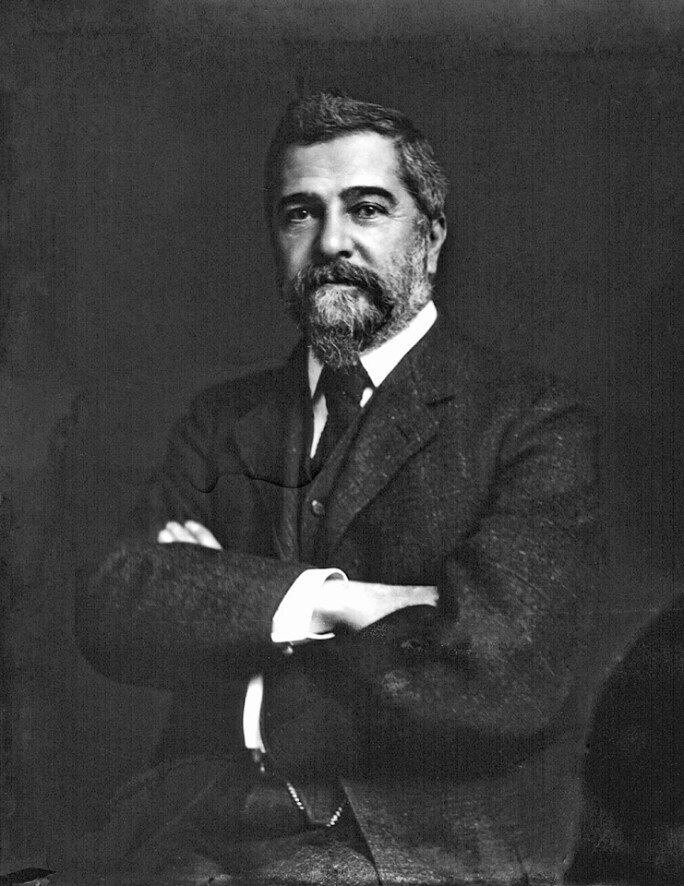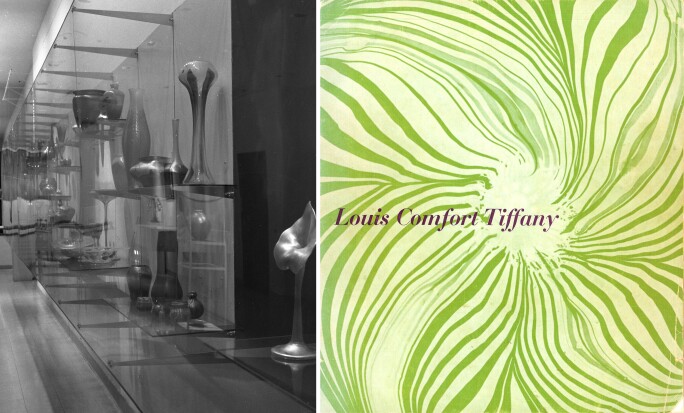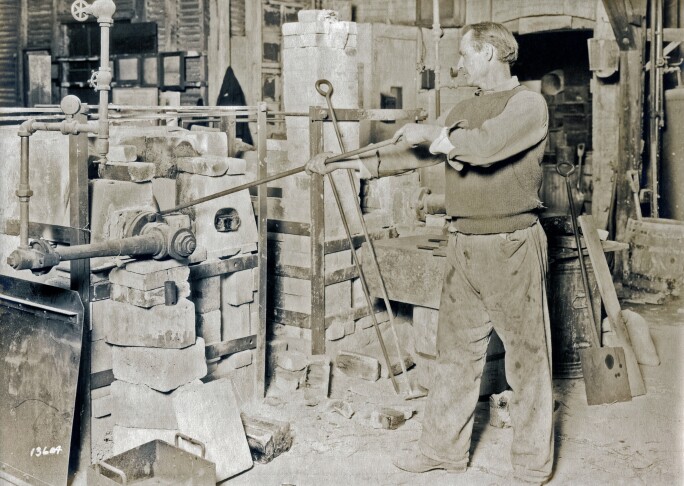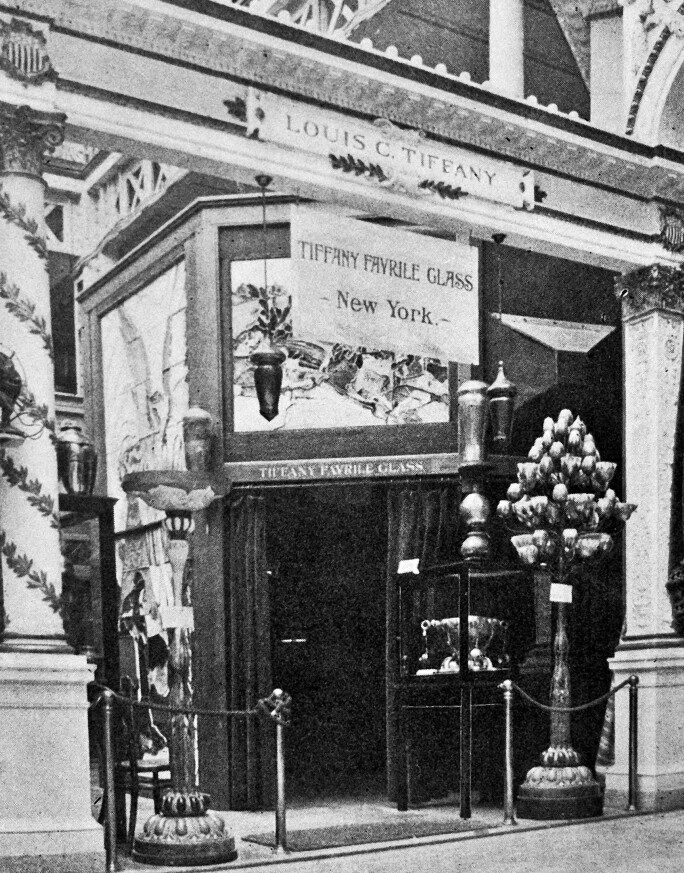
In 1958, the Museum of Contemporary Crafts in New York, then just a little over a year old, devoted its galleries to Louis Comfort Tiffany. It was the first monographic exhibition the institution ever presented, with three hundred objects filling the refurbished townhouse. The director, Thomas Tibbs, was well aware that his audience might be puzzled. This was craft, doubtless. But was it contemporary? “The question will inevitably be asked why the Museum of Contemporary Crafts has assembled as one of its major exhibitions the work of Louis Comfort Tiffany,” Tibbs wrote. Then he gave an answer: it was crucial to reconnect with the progenitors of modern craft, “those who reacted against the totality of the machine,” and Tiffany was the greatest of these exemplars: “America’s first modern craftsman, exemplifying much of what we stand for today.”1
To organize the exhibition, Tibbs needed assistance in soliciting loans, and found it no further away than next door, at the Museum of Modern Art (the two institutions were then side-by-side on East 53rd Street). Edgar J. Kaufmann, Jr., MoMA’s pioneering curator of architecture and design, had been interested in Tiffany for some time. He’d made his first acquisition of Favrile glass in 1947, and two years later, included Tiffany in an exhibition about the Art Nouveau movement, organized together with his chameleonic colleague Philip Johnson. Again, they knew this was a surprising choice. The museum’s own press release conceded that “the curved and ornate style of this period is generally regarded with horror.” But they, too, had an argument to make. Art Nouveau had “opened the way to subsequent movements in modern design,” and Tiffany was a paramount figure in that story, as he had been “the one American contributor to the movement,” who succeeded in “mak[ing] ornament organic rather than applied.”2

If the modernist embrace of Louis Comfort Tiffany still startles, all these years later, this is because he has not always been appreciated for his genuinely visionary qualities. He is seen above all as an avatar of “art for art’s sake,” that most fin-de-siècle of principles. This is understandable: Tiffany often spoke of his all-consuming quest for beauty (an objective he was able to pursue entirely without constraint, due to his family’s wealth), and scholars have tended to take him at his word. Neil Harris put it like this: “his greatest achievement was to propound a philosophy of decoration that accepted the supremacy of aesthetic effect as its primary justification.”3 Yet this accepted view can obscure what Tibbs, Kaufmann and Johnson saw clearly: just how progressive a figure Tiffany was, how formative his work was for later generations of modernists, and how generative it remains today. To understand him properly – which is exactly what Paul Doros has helped us to do, in the present catalogue and his previous research – requires that we see him above all as an innovator, rather than an aesthete. Moreover, we need to see his originality as flowing along many currents simultaneously, technical, cultural, and artistic.
We can begin in the Tiffany furnaces, where experiment, as Doros has written, was “more the rule than the exception.”4 From the moment that Tiffany first began designing stained glass, in 1880, he brought a restless curiosity to this most demanding of craft disciplines. The pace and range of his exploration in the medium was comparable only to the most celebrated episodes of the ensuing century: Venini’s long collaboration with designer Carlo Scarpa; the avant gardism of Czech sculptors Jaroslava Brychtová and Stanislav Libenský; and of course, studio glass during its ascendancy in the 1970s and 1980s. The leading lights of that movement followed in Tiffany’s aesthetic and cross-cultural footsteps, with Americans like Thomas Stearns going to Venice, and Lino Tagliapietria, the great maestro of Murano, to the USA.
All of these later achievements were accomplished through collaboration – glass is above all a team enterprise, as anyone who has seen the choreography of the hot shop can attest – and this was true of Tiffany as well. He relied on technicians Arthur Nash, previously of Edward Webb and Sons, and the chemist Parker C. McIlhiney, to realize his vision. He brought on Fredolin Kretschmann, an Austrian-born, Birmingham-trained glass cutter, who lavished his exquisite skill on cameo-style engraved pieces (a unique contribution to the firm’s output, an oeuvre within an oeuvre comparable to that of Kataro Shirayamadani at Rookwood Pottery). Flouting gender norms of the time, Tiffany also established a Women’s Glass Cutting Department in 1892; it eventually grew to fifty employees, who drew equal pay to the men.

Siegfried Bing, the leading impresario of art nouveau in Paris, recognized Tiffany’s huge operation as a signal achievement in its own right: “the establishment of a large factory, a vast central workshop that would consolidate under one roof an army of craftsmen representing every relevant technique.”5 And this diverse personnel did indeed get impressive results. It was Clara Driscoll of the women’s department, for example, who developed the celebrated Dragonfly lamp first shown at the Exposition Universelle in Paris in 1900. And it was McIlhiney who discovered the firm’s signature iridescence (the secret was fuming metallic salts on to the hot glass before forming it). This luminous effect would make Favrile glass a literal incarnation of the Gilded Age – a phrase coined by Mark Twain, an important client of Tiffany’s earlier decorating business, as it happens – while also evoking ancient Mediterranean examples with many centuries worth of patina. It was as if they had found a way to accelerate the passage of time itself.
Iridescence was only the most obvious of Tiffany’s many technical innovations. Working in rivalrous parallel to John La Farge, he and his team made unprecedented use of leading (the metal armature that joins and articulates the window) and plating (the layering and mixing of multiple colors). This allowed for a new artistry in stained glass, as draftsmanly as charcoal on paper, as painterly as oil on canvas. Bing even arranged for Tiffany to execute designs by radicals like Pierre Bonnard, Édouard Vuillard, Henri Toulouse-Lautrec and Félix Valloton into glass. When Tiffany refocused his prodigious energy on making vases and other object d’art, he transposed these possibilities to three dimensions, effectively shifting from the logic of painting to that of sculpture, or rather, combining them into a unique synthesis.
Tiffany was also an early adopter of technology, an ardent enthusiast of automobiles and photography, and although his first lamps were lit with gas, he began incorporating electricity into his lighting as soon as it was practicable. It takes a force of effort to grasp just how novel this was at the time: it was as if he’d captured the radiance that stained glass has on a bright summer day, and put it indoors. Quite probably, most of Tiffany’s own workers did not have electricity in their homes (this was true of Clara Driscoll, for example). When his firm exhibited at the 1900 Paris Exposition, eventually to great acclaim, Tiffany arrived to find that there was no power source. He had to improvise, turning to Westinghouse, which also had a display at the fair, and ask them to put in wiring.6

If Tiffany was a technologist as much as he was a decorative artist, then he also demonstrated that revivalism and innovation were not in opposition. Rather like the pioneering “ornamentalist” Christopher Dresser, whom he met at the 1876 Centennial Exposition in Philadelphia, he drew on a wide palette of historic sources – Egyptian, Roman, Cypriot, Byzantine, Japanese – while making work that was anything but historicist. Tiffany is sometimes described as a figure of the “American Renaissance,” and this is a helpful rubric, so long as we remember that, like the progenitors of the Italian Renaissance itself, he and his peers were by no means contained in the past.7 Some of the greatest classical buildings of the late nineteenth century had very modern functions (train stations, public libraries, post offices, and of course, museums). Similarly, the sculptor Augustus Saint-Gaudens, an associate of Tiffany’s, employed his classical erudition in the service of modern subjects, and also produced scaled-down replicas to reach a wide market.
Tiffany was working in the same spirit, transmuting his various cross-cultural references into a new, abstract language, which he saw as a means to enlighten the general public. In this respect he was an exponent of what Candace Wheeler – who had been one of the “Associated Artists” in his decorating firm – called “household art,” a phrase intended to imply the universality of improving aesthetic experience. “Beauty, like education,” she wrote, “can dignify any circumstances, from the narrowest to the most opulent.”8 Tiffany would doubtless have concurred. While his glass would never be truly affordable, given the inherent expense of running a furnace and the inevitable inefficiencies of his experimentalism, he did make some items pitched to middle-class consumers. He also clearly viewed his participation in world’s fairs in democratic terms. These events were not just promotional opportunities, but also a way to advance the cause of design reform. At the same time, he was not afraid to transgress the boundaries of prevailing tastes. His Lava vases, for example, are as outré as anything made by his contemporaries George E. Ohr and Paul Gauguin, or indeed, the modern craft artists of succeeding generations, down to the present day. It’s in this respect, perhaps, that Tiffany was most inclusive. He was making art not only for its own sake, and not only for his own time, but for future generations as well. He was making it for us.
GLENN ADAMSON
Independent author and curator, New York
1 Robert Koch, Louis Comfort Tiffany: Retrospective (New York: Museum of Contemporary Crafts, 1958). The suggestion to do the show came from the textile designer Jack Lenor Larsen, a member of the museum's Board of Trustees.
2 "Exhibition of Furniture and Decorative Objects of Art Nouveau Period," Press Release, Museum of Modern Art, July 13, 1949. MoMA's collection of Tiffany would be consolidated by a large gift in 1960, from collector Joseph H. Heil, who had also collaborated with the Museum of Contemporary Crafts on the 1958 exhibition, providing loans and his own photographs for the publication.
3 Neil Harris, "Louis Comfort Tiffany: The Quest for Influence," in Alistair Duncan, ED., Masterworks of Louis Comfort Tiffany (New York: Harry N. Abrams, 1989), 14.
4 Paul E. Doros, The Art Glass of Louis Comfort Tiffany (New York: Vendome Press, 2013), 189.
5 Siegfried Bing, Excerpts from Artistic America, 1895. As translated by Bettina Eisler and reprinted in Robert Koch, ED., Artistic America: Tiffany Glass and Art Nouveau (Cambridge, MA: MIT Press, 1970).
6 Doros, The Art Glass of Louis Comfort Tiffany, 23-25.
7 Richard Guy Wilson, et al., The American Renaissance, 1876–1917 (Brooklyn: The Brooklyn Museum, 1979).
8 Candace Wheeler, Principles of Home Decoration (New York: Doubleday, 1903), 8. See also Candace Wheeler, ED., Household Art (New York: Harper & Brothers, 1893); Amelia Peck and Carol Irish, Candace Wheeler: The Art and Enterprise of American Design, 1875–1900 (New York: Metropolitan Museum of Art, 2001).
